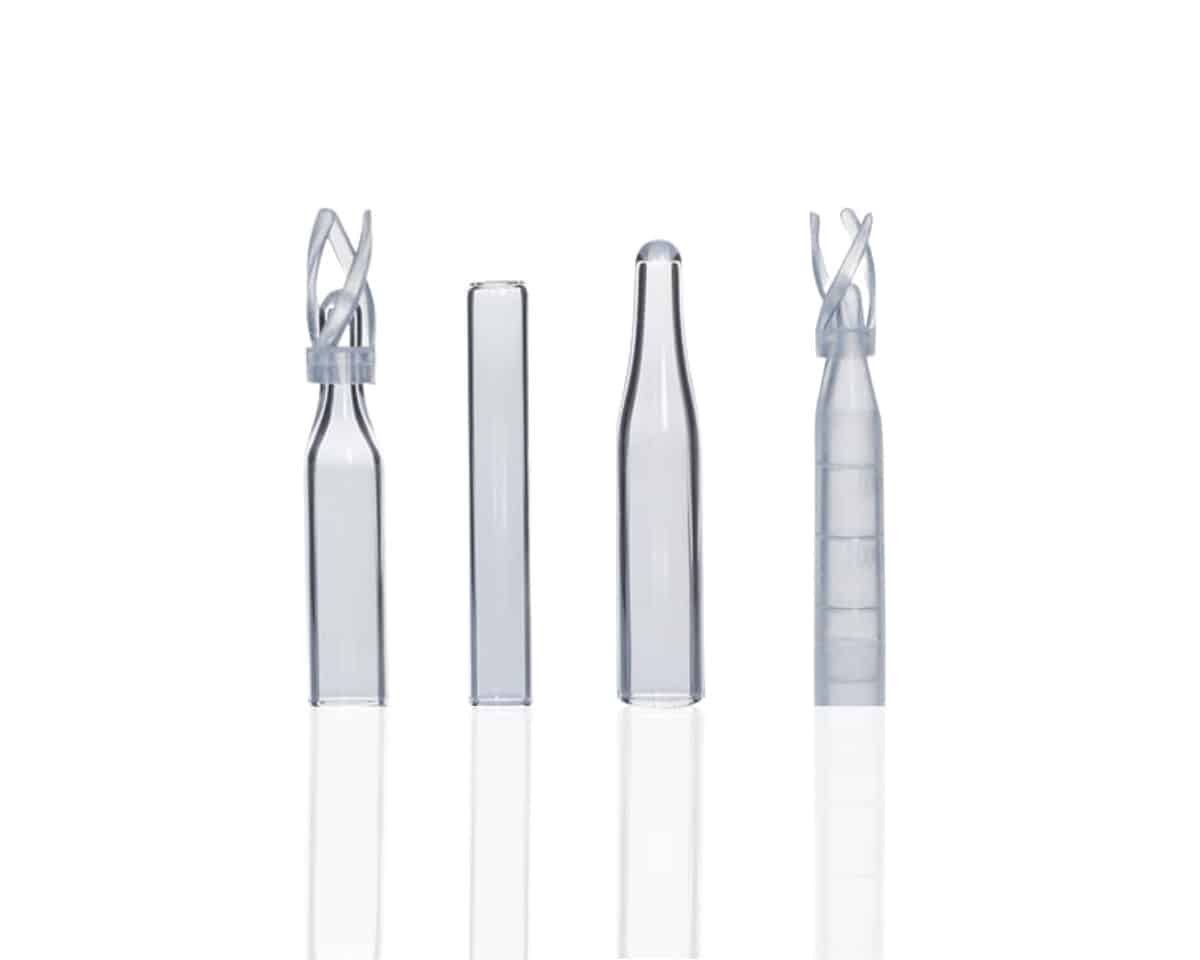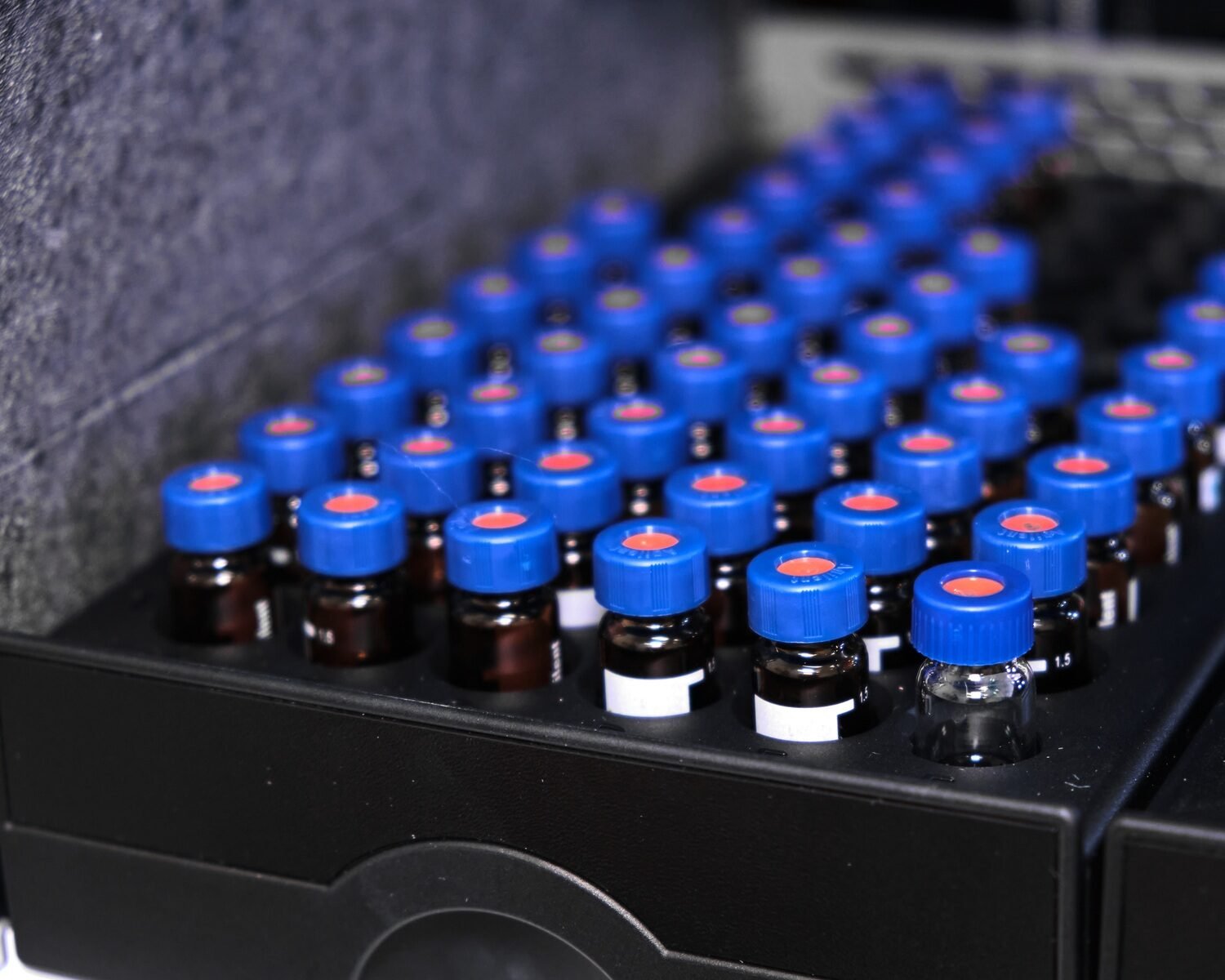Introduction
When it comes to HPLC vial performance, septa are often the unsung heroes—or culprits. The septa (or septum) sits at the center of your vial cap and forms the first barrier between your sample and the outside world. Whether you’re running an automated injection system or manually injecting critical samples, choosing the right septum can affect everything from seal integrity to needle wear to sample evaporation.
One of the most common questions we hear is:
Should I use pre-slit septa or solid septa?
The answer depends on several factors: your autosampler needle, your sample type, and your workflow frequency. In this article, we’ll break down the differences, benefits, and ideal applications of each septum type so you can make the best decision for your HPLC system.
What Is a Septum and Why It Matters in HPLC
At a glance, the septa may look like a simple rubber plug, but it’s a critical component of your vial cap. Its primary purpose is to seal the vial while still allowing needle penetration for sample injection.
1. Septum Structure and Materials
- Typically made from silicone, PTFE/silicone laminate, or rubber
- Sandwiched into crimp caps, screw caps, or snap caps
- Thickness generally ranges from 1–3 mm, balancing seal tightness and pierceability
2. Functions in the HPLC Workflow
- Provides an airtight barrier to prevent evaporation or contamination
- Withstands repeated needle penetrations in automated systems
- Maintains chemical compatibility with organic and aqueous solvents
3. Septa Variants
- Solid septa: no pre-cut slit
- Pre-slit septa: feature a small slit in the center to reduce needle pressure during puncture
Why does this matter? Because choosing the wrong septum for your system can lead to leaks, needle damage, inconsistent sample volumes, and degraded results.
Benefits of Pre-Slit Septa: Easy Penetration and Reduced Stress
Pre-slit septa come with a central slit that allows for smoother needle entry. While it may seem like a minor detail, this tiny opening makes a big difference in fast-paced or automated labs.
1. Reduced Needle Wear and Risk of Bending
In high-throughput environments, autosampler needles repeatedly puncture vial septa. Solid septa require more force to pierce, which can stress or dull the needle over time. Pre-slit septa reduce resistance and prolong needle lifespan, especially important for delicate or expensive autosamplers.
2. Lower Risk of Sample Pull-Back or Splashing
In some cases, solid septa can create back-pressure, especially when inserting thick or blunt needles. This can lead to air bubbles, incomplete sample withdrawal, or even splashes that result in cross-contamination. Pre-slit septa ensure smoother penetration and consistent sample access.
3. Ideal for Micro-Volume and Viscous Samples
When handling very small samples or high-viscosity analytes, minimizing disruption during injection is critical. Pre-slit septa allow the needle to gently slide through, avoiding sample turbulence or overpressure.
4. Best Uses for Pre-Slit Septa
- Automated systems with multiple injections
- Labs using thick or robotic needles
- High-throughput workflows
- Micro-sample analysis (≤10 µL)
Caution: Pre-slit septa are more prone to evaporation and contamination, especially over long-term storage. They are best suited for immediate or short-term use.
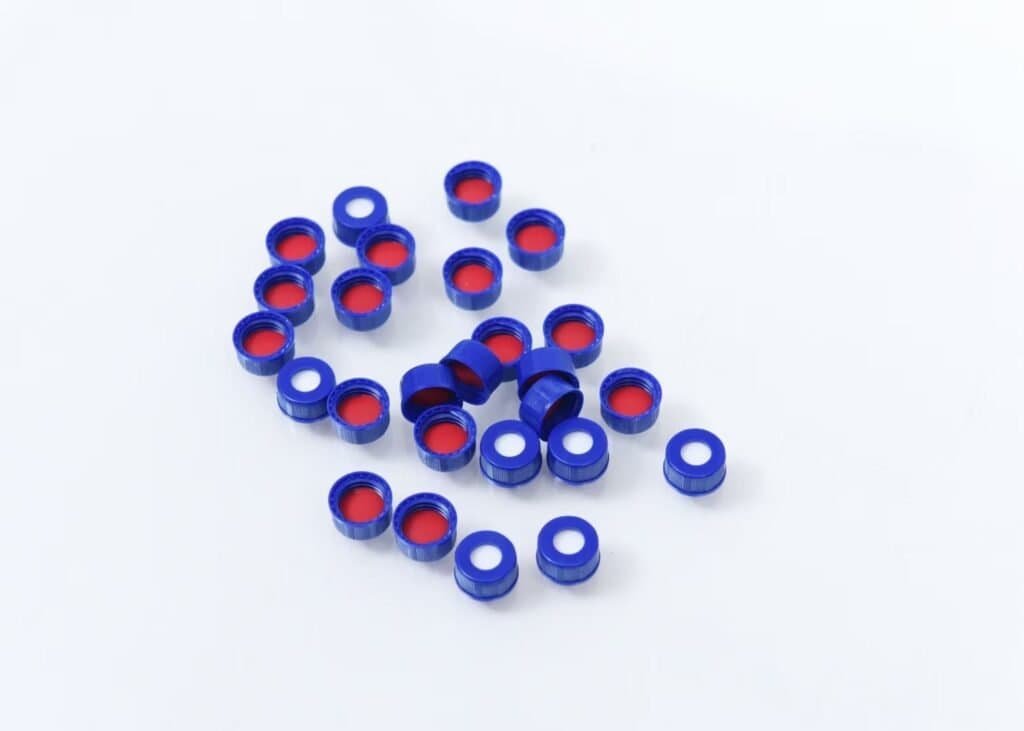

Advantages of Solid Septa: Better Sealing for Volatile Samples
Solid septa do not have a pre-cut slit and maintain a completely intact surface until pierced. While they require more force during penetration, they offer superior sealing and sample protection—a critical factor for sensitive workflows.
1. Maximum Seal Integrity
Because solid septa have no opening before the first puncture, they provide excellent resistance to solvent evaporation and air ingress. This is essential for volatile solvents such as acetonitrile, methanol, and dichloromethane.
2. Better for Long-Term Storage
If your samples need to be stored for days—or even weeks—solid septa are your best bet. They reduce the risk of:
- Sample evaporation
- Contaminant entry
- Septum fatigue from air exposure
3. Preventing Environmental Contamination
Solid septa protect the sample from lab air particles, moisture, and cross-contamination from other samples. They’re ideal for trace-level detection where even a few micrograms of contamination can skew results.
4. Best Uses for Solid Septa
- Volatile or sensitive samples
- Long-term storage
- Manual injection where precision matters
- Low-throughput but high-accuracy environments
Downside: Because they require more force to pierce, thin or fragile needles may bend or become dull more quickly with frequent use.
How to Choose Based on Your Application and Autosampler Typ
So, how do you decide between pre-slit and solid septa? Here’s a simple breakdown:
1. Consider Your Injection Method
- Automated injection: Pre-slit septa minimize wear and improve reliability
- Manual injection: Solid septa offer tighter control and better sealing
2. Think About Sample Stability
- Volatile solvents: Solid septa help retain sample integrity
- Non-volatile, aqueous samples: Pre-slit septa may be sufficient
3. Evaluate Your Autosampler Needle
- Thin, sensitive needles: Pre-slit septa reduce risk of bending
- Robust steel needles: Solid septa may be fine if injection force is manageable
4. Sample Storage Duration
- Same-day use: Pre-slit is fine
- Overnight or longer: Solid septa recommended
Pro Tip: Some labs use both types—pre-slit for real-time injections, and solid for storage. If your workflow allows, this hybrid approach offers the best of both worlds.
Case Study: Switching Septa Types to Improve Reproducibility
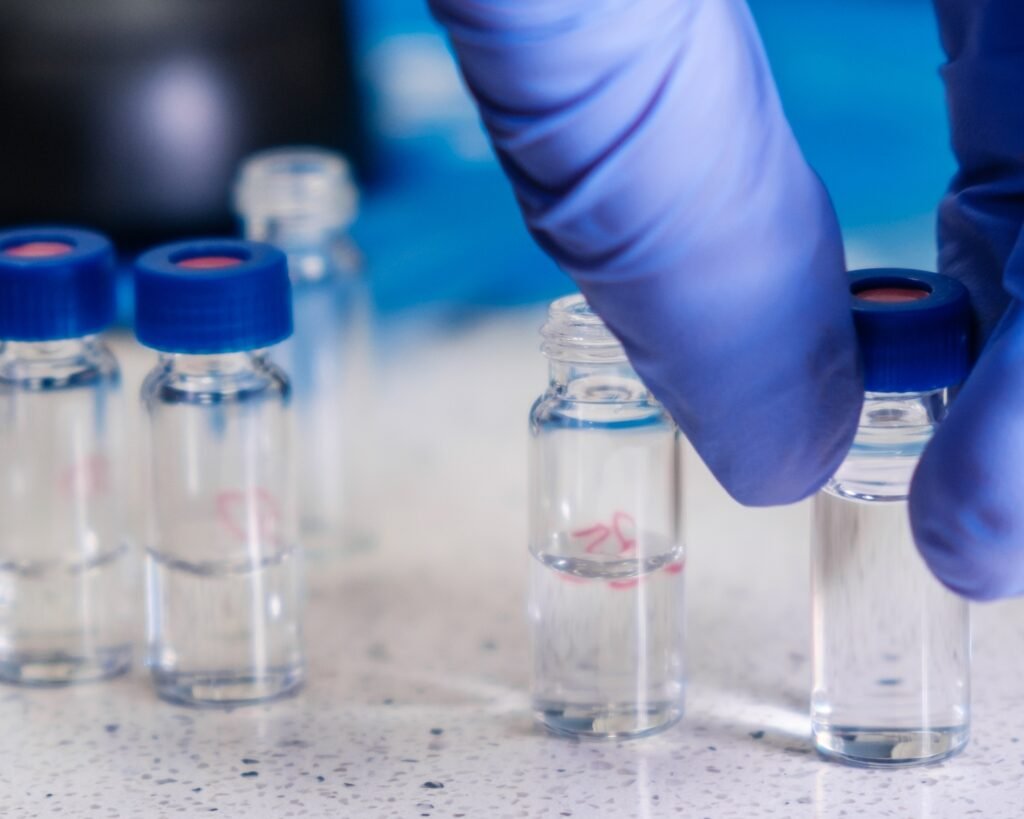
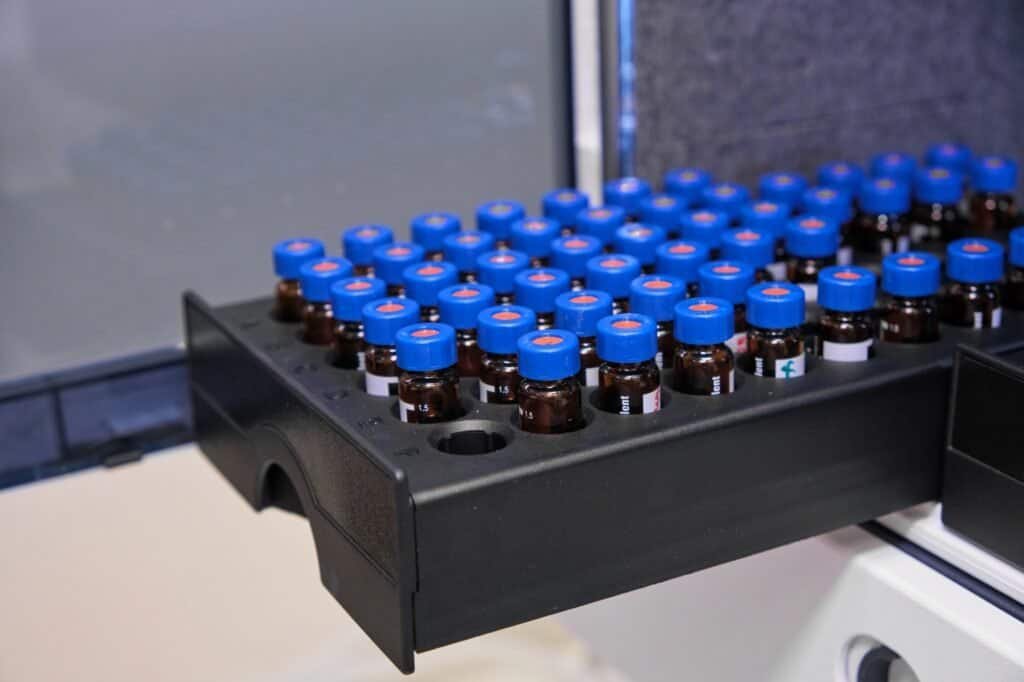
A biotech lab performing protein quantification by LC-MS was experiencing inconsistent peak areas in replicate runs. After reviewing their workflow, they realized the problem stemmed from their pre-slit septa, which allowed evaporation during extended sample queue times.
What They Changed:
- Switched from pre-slit PTFE/silicone to solid septa with crimp caps
- Adjusted needle depth to avoid bending during manual injections
- Implemented sample rotation every 2 hours to minimize time on the tray
The Result:
- Reproducibility improved by over 20%
- No more ghost peaks or retention time drift
- Fewer needle service calls and reduced system downtime
Lesson: Small changes in consumables can lead to major improvements in method precision and equipment reliability.
Conclusion
The choice between pre-slit and solid septa isn’t about which one is “better”—it’s about which one is better for your specific application.
Pre-slit septa offer easy needle access, reduced wear, and are ideal for automated, short-term workflows. Solid septa provide better sealing, greater sample protection, and are perfect for volatile samples or long-term storage.
Take time to evaluate your injection method, analyte type, and storage needs, and choose a septum that complements—not compromises—your HPLC workflow. Your samples, your instruments, and your results will thank you.
Mastelf, with over 13 years of experience in chromatography vials since established in 2011, we can help you find the exact vials you need for your applications.
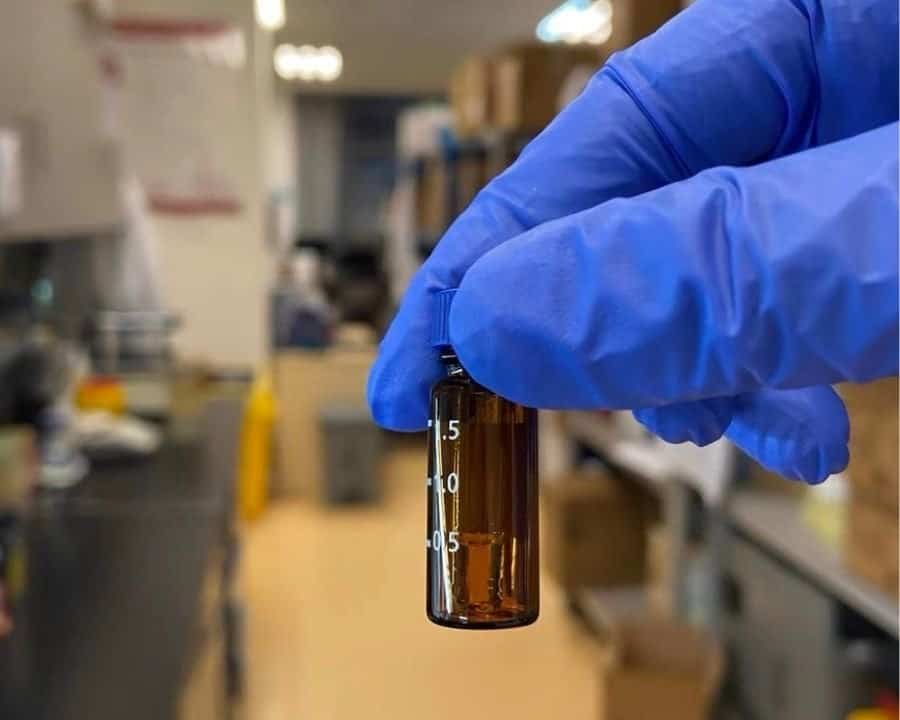
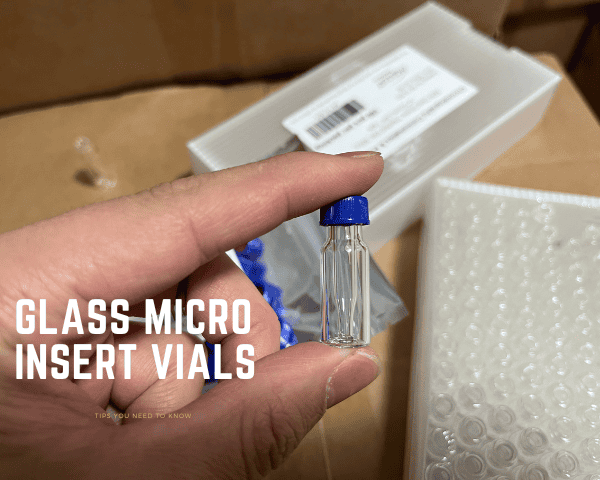
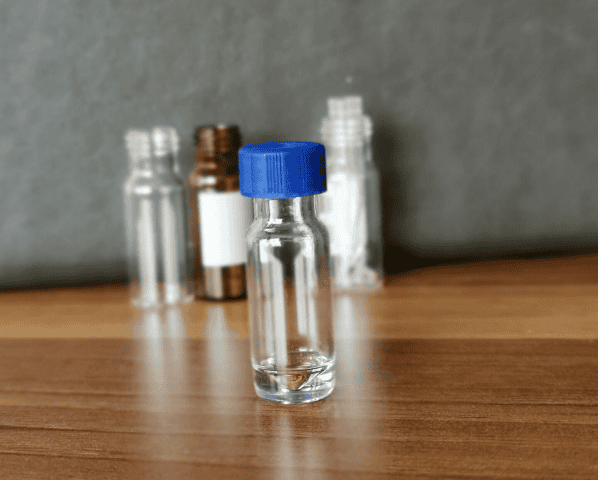
Our expertise ensures that you get reliable and precise products tailored to your specific requirements. Whether you’re in pharmaceuticals, research, or any other industry relying on HPLC, we understand your needs and are here to support you in making the right purchase.
Reach out to Mastelf, and let us assist you in procuring the perfect vials for your work.
FAQ: Choosing the Right Septa for HPLC Vials
1. What is the main difference between pre-slit and solid septa?
Pre-slit septa have a small slit in the center for easier needle penetration, while solid septa are uncut and provide a stronger seal. The choice depends on your injection style and sample volatility.
2. Do pre-slit septa increase the risk of contamination?
Yes, especially if left exposed for long periods. The slit can allow air or particles to enter, making them less suitable for long-term storage or volatile samples.
3. Can I use pre-slit septa for manual injections?
You can, but it’s usually not necessary. Manual injections don’t wear needles as quickly, and solid septa offer better sealing, especially for sensitive or stored samples.
4. Which septa type is better for LC-MS applications?
Solid septa are generally better for LC-MS due to the need for tight seals and minimal background interference. Use PTFE/silicone-lined solid septa for best performance.
5. How many times can a septum be pierced before it should be replaced?
Typically 5–10 times, depending on septum quality and needle thickness. Pre-slit septa often last slightly longer in autosamplers due to reduced piercing stress.







